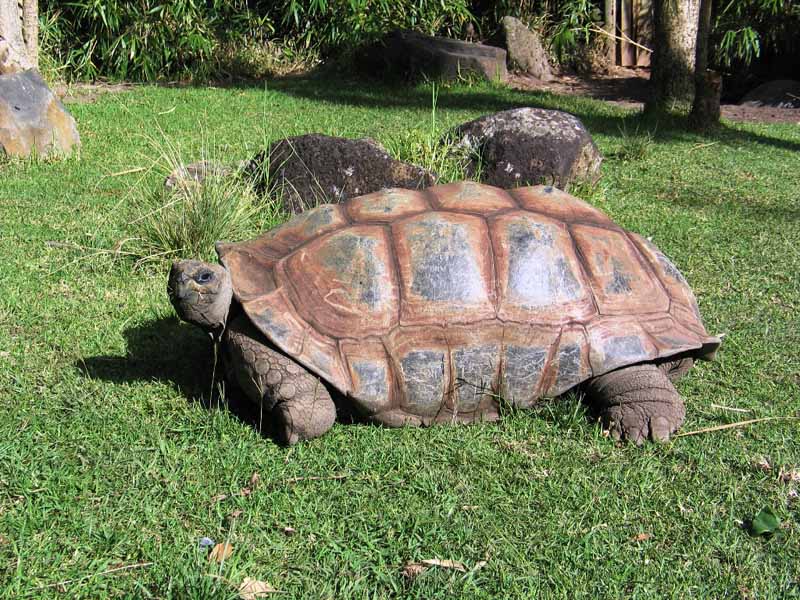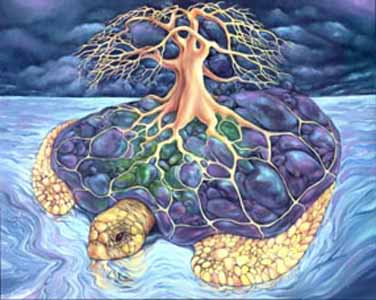
Lonesome George, the Galapagos tortoise, was the last known of his subspecies.
Good-bye George it's been an interesting journey.

Lonesome George, the Galapagos tortoise, was the last known of his subspecies.
Good-bye George it's been an interesting journey.
 Last Pinta giant tortoise Lonesome George dies BBC - June 25, 2012
Last Pinta giant tortoise Lonesome George dies BBC - June 25, 2012
Staff at the Galapagos National Park in Ecuador say Lonesome George, a giant tortoise believed to be the last of its subspecies, has died. Scientists estimate he was about 100 years old. Park officials said they would carry out a post-mortem to determine the cause of his death.With no offspring and no known individuals from his subspecies left, Lonesome George became known as the rarest creature in the world. For decades, environmentalists unsuccessfully tried to get the Pinta Island tortoise to reproduce with females from a similar subspecies on the Galapagos Islands.
Taking this to the story of "creation" ... Charles Darwin is known for conducting research about the Theory of Evolution, on the Galapagos Islands. Death creates interesting metaphors. Darwin's theories are dead in the water. We segue to Ancient Alien Theory and on the reality as a consciousness hologram.

The tortoise moved slowly but reached her destination and won at the end of the story just as time ran out. Tick tock ! Therein lies a timely metaphor. Humans fell down the rabbit hole (lower consciousness frequency) and are asleep, soon to wake up.
In Classical times it was not the Tortoise's plucky conduct in taking on a "bully" that was emphasized but the Hare's foolish over-confidence. In mathematics and computer science, the tortoise and the hare algorithm is an alternate name for Floyd's cycle-finding algorithm.

Turtle Island is a term used by several Northeastern Woodland Native American tribes, especially the Haudenosaunee or Iroquois Confederacy, for the continent of North America. According to Iroquois oral history, Sky Woman fell down to the earth when it was covered with water. Various animals tried to swim to the bottom of the ocean to bring back dirt to create land. Muskrat succeeded in gathering dirt, which was placed on the back of a turtle, which grew into the land known today as North America. In the Seneca language, the mythical turtle is called Hah-nu-nah, while the name for an everyday turtle is ha-no-wa.
The name Turtle Island is used today by many Native tribes, Native rights activists, and environmental activists, especially since the 1970s when the term came into wider usage. In a later essay, published in At Home on the Earth, Gary Snyder claimed this title as a term referring to North America that synthesizes both indigenous and colonizer cultures by translating the indigenous name into the colonizer's languages (the Spanish "Isla Tortuga" being proposed as a name as well). Snyder argues that understanding North America under the name of Turtle Island will help shift conceptions of the continent.
Referring to North America as Turtle Island suggests a view of North America not merely as a land "discovered" and colonized by Europeans and people of European descent, but as a land inhabited and stewarded by a collection of rich, diverse, and civilized peoples, a collection that may have room for both indigenous and colonizer cultures. This re-framing of the continent's identity is intended to bring about a better cohabitation of these two groups of people. Finally, the term suggests to some interpreters a more holistic relationship between the continent's ecology and its human inhabitants, visualizing Turtle Island as an amalgamation of bioregions.
The term has been used by writers and musicians, as well as others. Notable uses include Gary Snyder's Turtle Island, winner of the Pulitzer Prize for Poetry, the Turtle Island Quartet, a modern-day jazz string quartet, and soy foods manufacturer Turtle Island Foods.